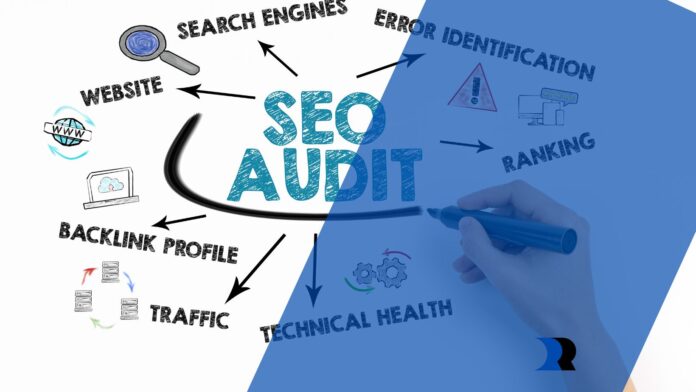In the rapidly evolving digital landscape, where search engine rankings can make or break a business, conducting a comprehensive search engine optimization (SEO) audit has become more crucial than ever.
That said, this guide will walk you through the step-by-step process of conducting a comprehensive site analysis, providing you with the tools, techniques, and tips needed to elevate your website’s ranking and reach.
Set Clear Objectives
Before diving into the analysis, it’s crucial to define what you aim to achieve. Objectives can range from improving search engine rankings, enhancing site speed, and increasing user engagement to identifying and fixing technical issues.
Incorporating platforms like Sortlist can be instrumental in this phase, as they help provide a curated list of service providers that can assist in achieving your goals. This strategic approach ensures that every step taken contributes meaningfully towards enhancing your site’s performance and visibility.
Utilize The Right Tools
Several tools are available to aid in your site analysis, each serving different aspects of the analysis:
- Google Analytics: Tracks and reports website traffic, providing a wealth of data about user behavior and engagement. In addition, you can identify which pages are the most popular, where your traffic is coming from, how long visitors are staying on your site, and what actions they’re taking.
- Google Search Console: It provides valuable insights into mobile usability, highlighting issues that could affect your site’s performance on mobile devices. Additionally, it alerts you to site errors, such as crawl issues or security problems that could negatively impact your search rankings.
- SEMRush Or Ahrefs: Both SEMRush and Ahrefs are powerful tools for more in-depth SEO analysis. They excel in keyword research, offering data on keyword difficulty, search volume, and the potential traffic you could gain by ranking for those keywords.
- PageSpeed Insights: It analyzes the content of a web page and then generates suggestions to make that page faster. Note that improving page speed not only enhances the user experience but can also contribute to better search engine rankings.
Conduct A Technical SEO Audit
A technical SEO audit involves examining the technical aspects of your site that impact search engine rankings:
- Check Site Crawlability: This step involves using tools like Google Search Console to identify and resolve crawl errors, ensuring that search engine bots can access all relevant pages.
- SSL Certificate: Ensuring that your site uses HTTPS, rather than HTTP, signals to search engines and users alike that your site is secure.
- Mobile-Friendliness: Ensuring mobile-friendliness encompasses optimizing layout, scaling images, and improving site navigation for touchscreens.
- Site Speed: Utilizing tools like Google’s PageSpeed Insights can help identify bottlenecks that slow down your site, such as unoptimized images, slow server response times, or bulky code.
- URL Structure: Ensuring that your URLs are clean, logical, and keyword-rich is an essential step in a technical SEO audit, contributing to better site navigation and improved search engine visibility.
Perform An On-Page SEO Evaluation
On-page SEO elements play a crucial role in determining the ranking potential of a website:
- Content Quality: This involves scrutinizing your content for relevance to your target audience, ensuring it’s original and provides substantial value to your readers.
- Keyword Optimization: This step involves analyzing your pages to confirm that target keywords are integrated naturally and strategically throughout the content, including in titles, headings, and body text.

- Meta Tags And Headings: Ensure that meta titles and descriptions are compelling, accurately reflect the content of each page, and include target keywords.
- Image Optimization: This involves checking that all images on your site are formatted correctly, compressed without significantly impacting quality, and include descriptive alt text.
Analyze Off-Page SEO Factors
Off-page SEO focuses on external factors influencing your site’s reputation and authority:
- Backlink Profile: Analyzing your backlink profile involves assessing the authority of linking domains, the relevance of the links to your content, and the overall link diversity.
- Social Media Engagement: Assessing your social media engagement involves analyzing the frequency of your posts, the quality and relevance of your content, the level of interaction with your audience, and the growth of your follower base.
- Local SEO: For local businesses, ensure your business is listed accurately across local directories and maps.
Evaluate User Experience (UX)
User experience plays a crucial role in retaining visitors and converting them into customers:
- Navigation And Structure: This involves analyzing your site’s layout, menu structure, and internal linking to ensure that users can navigate your site with minimal effort.
- Content Accessibility: This includes using proper contrast ratios, text alternatives for images (alt text), and accessible navigation. Tools like the Web Accessibility Evaluation Tool (WAVE) can help identify accessibility issues on your site.
- Engagement Metrics: Analyze metrics such as bounce rate, average session duration, and pages per session.
Develop An Action Plan
This step should detail what needs to be done, how it should be done, and who is responsible for its execution. For instance, tasks can range from technical fixes like improving site speed to content creation and optimization to outreach efforts for building backlinks. Assigning responsibilities is crucial for accountability and ensures that each team member knows their specific role in the SEO improvement process.
Monitor Progress And Adjust
SEO is an ongoing process, and the site’s performance should be continuously monitored after implementing changes based on the action plan.

Regular monitoring helps identify whether the implemented changes are yielding the desired results or if further adjustments are needed. It also ensures that the site remains aligned with evolving SEO best practices and adapts to any changes in search engine algorithms or user behavior trends.
Conclusion
SEO is not a set-and-forget task; it requires ongoing monitoring and adaptation to continuously improve and maintain your site’s performance in the ever-evolving landscape of search engine algorithms and user expectations. Ultimately, the key to successful SEO lies in a strategic, well-organized approach that emphasizes continuous improvement and adaptation.


